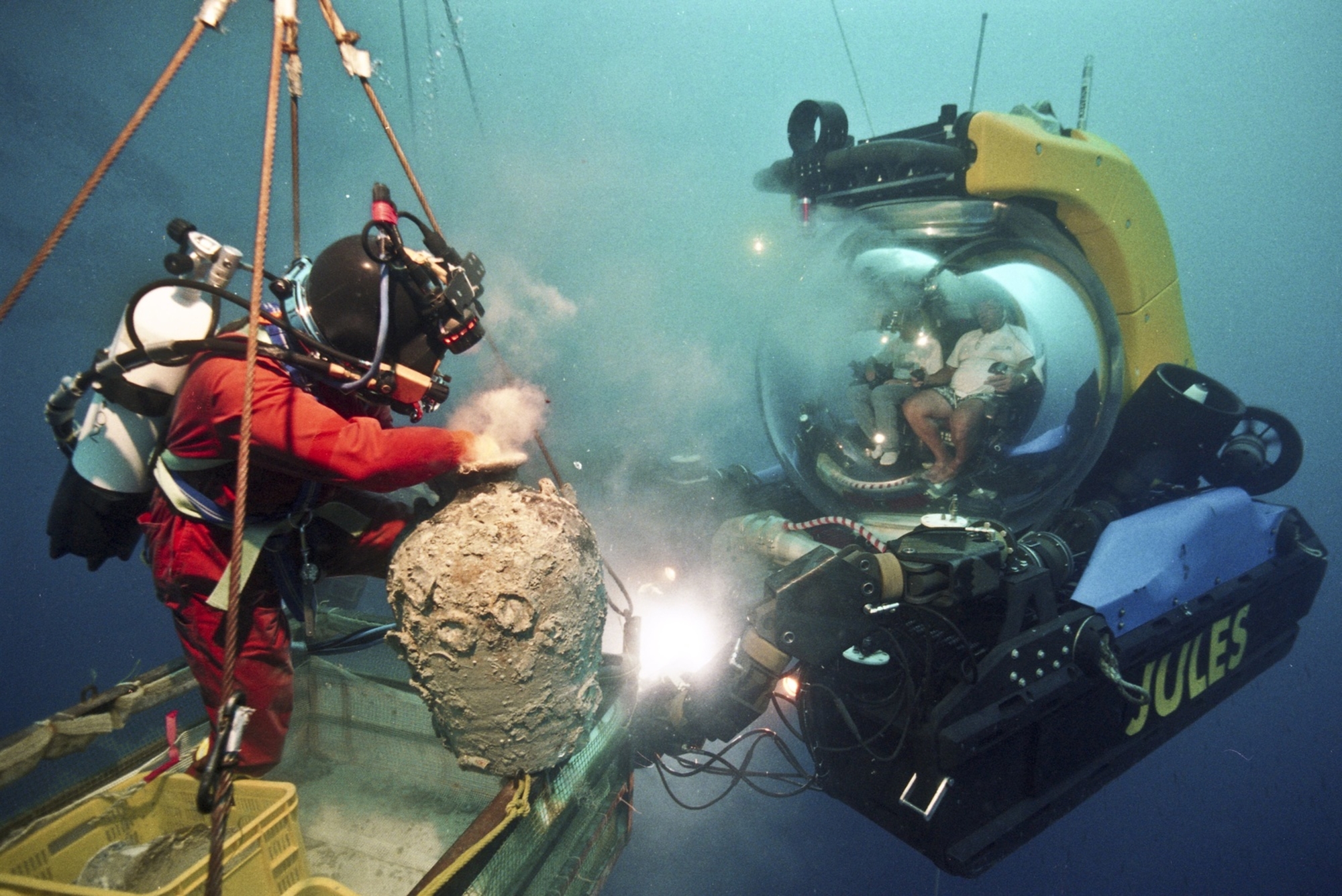
- Home
- A great scientific adventure
- French excavations abroad
- Brunei (Borneo)
In 1997, DRASSM was called upon to survey the wreck of an Asian merchant ship which had foundered in the South China Sea in the late fifteenth century. The wreck lay sixty-five metres down in the turbid and dangerous waters off the coast of the sultanate of Brunei (Borneo).
A remarkable excavation
The excavation began in May 1998 under the direction of Michel L’Hour (DRASSM) and lasted three months. It called upon the expertise of 175 specialists from around the world. Based on a floating barge assigned exclusively to the excavation works, 135 scientists dealt with recording material culture and sifting 200 tonnes of sediment; while forty experts ashore undertook the task of processing, conserving, drawing and cataloguing each artefact.
A robotic device and two submersibles were deployed to enable diving archaeologists to explore the wreck; however the water was so muddy, these marvels of technology were not as effective as expected.
A treasure trove
Comprising 14,000 significant artefacts, the cargo produced 4,600 blue and white porcelain vases of the Ming dynasty, 2,200 jars of various origins (China, Thailand, Vietnam), as well as green and yellow sintered glass bracelets, metal bars, small conical or pyramidal ingots, bronze gongs and cooking pots.
Thanks to the Brunei junk, our knowledge of historical commerce across the China Sea is expanding significantly. Everyday objects were the most traded.
In terms of the resources deployed by oil company Elf Aquitaine (now Total) and the results obtained, this operation continues to be the most significant underwater archaeological excavation in the world. It demonstrates the excellence of French archaeology and sets a fine example of how to go about protecting underwater cultural heritage.








